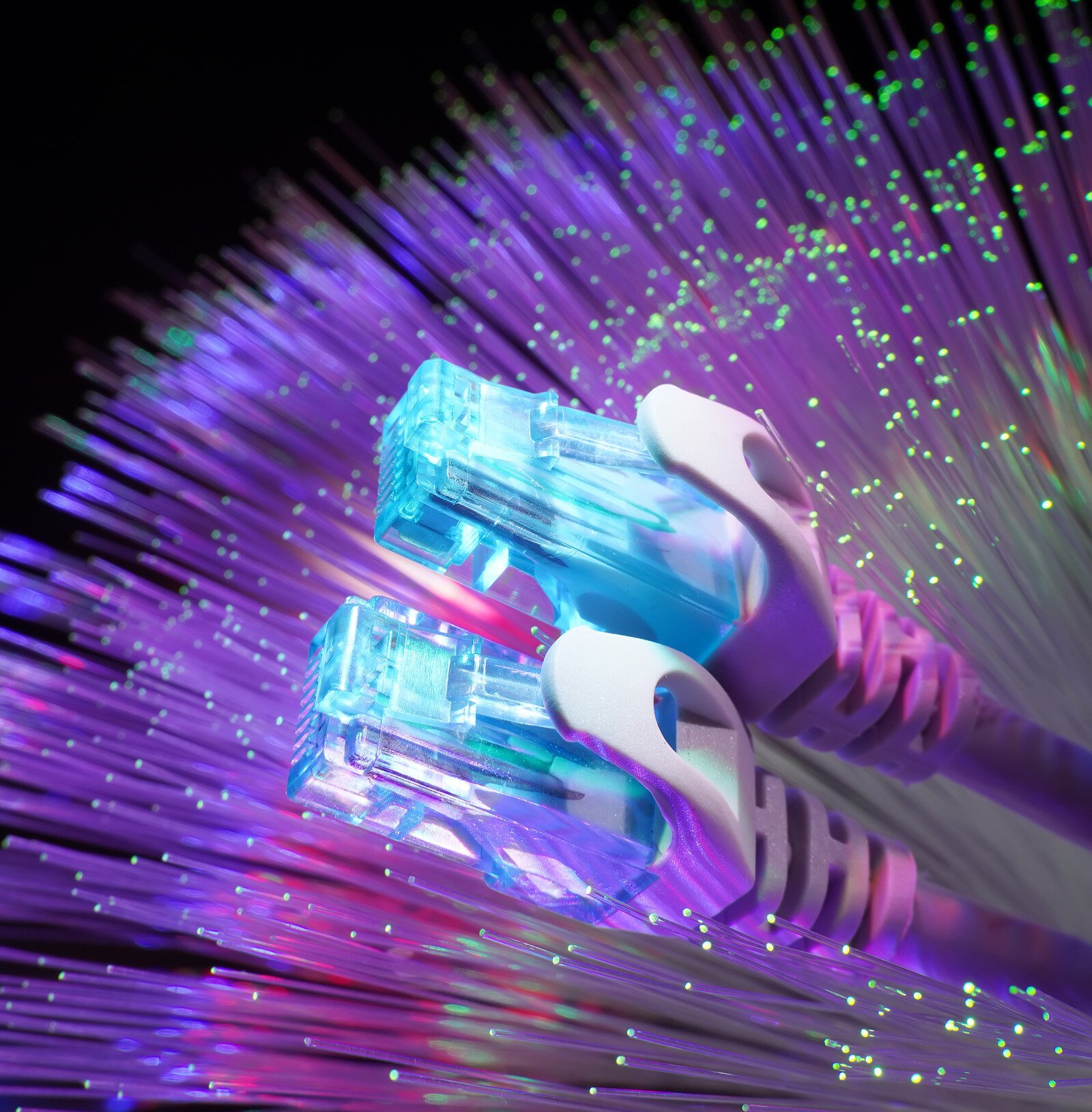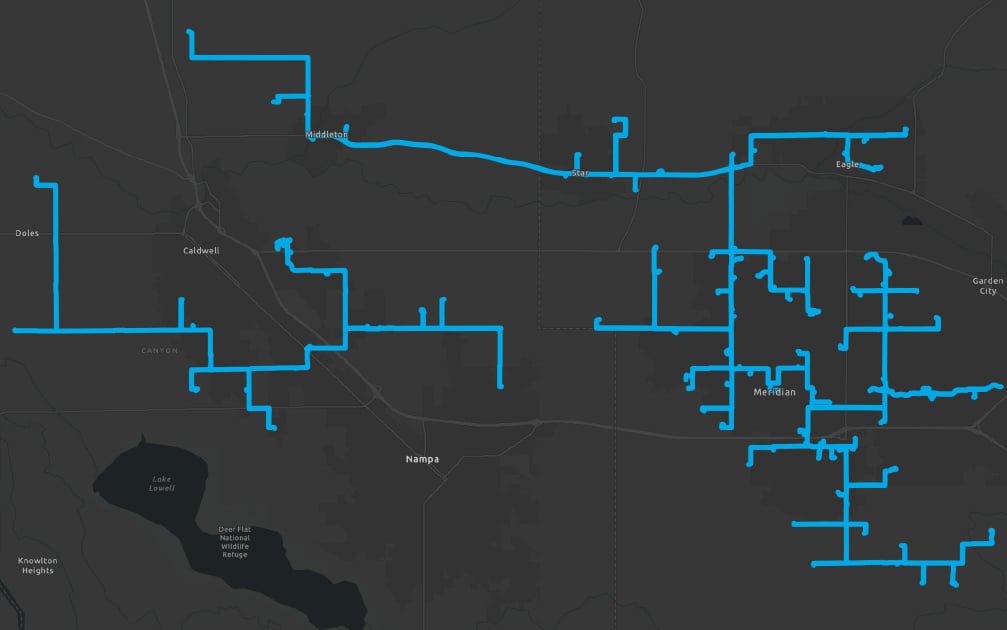Are you curious about the buzz surrounding fiber internet? You're not alone. Nine million new households subscribed to fiber in 2023,1 and as fiber internet adoption rises, more homeowners are wondering what sets this technology apart from the traditional internet services you're more familiar with. This blog will break down the biggest differences between fiber and cable internet to help you decide which is right for your home connectivity needs.
What Is Fiber Internet?
Fiber internet is the latest evolution in high-speed internet technology. It uses fiber optic cables, which are flexible strands of plastic or glass, to transmit data using pulses of light. This innovative approach allows for blazing-fast and ultra-reliable internet connections.
In a fiber optic network, data travels at nearly the speed of light. The result? Faster speeds and lower latency compared to traditional internet technologies. Fiber optic cables can also carry significantly more data over longer distances without degradation, making it the ideal solution for today's data-hungry households.
What Is Cable Internet?
Cable internet, a technology that's been around for decades, uses the same coaxial cable network that delivers cable television for data transmission. This infrastructure, originally designed for TV signals, has been adapted to carry internet traffic as well.
Cable internet providers transfer data through copper cables, which can offer reasonably fast speeds but are subject to more limitations than fiber optics. Thanks to the shared nature of cable networks, speeds often slow down during peak usage times when many people in a neighborhood are online at the same time.
Fiber vs. Cable Internet: How Are They Different?
Now that we've covered the basics, let's explore the biggest differences between fiber and cable internet:

Download and Upload Speeds
Fiber optic internet connections are typically much faster than cable, especially when it comes to upload speeds.
Cable internet speeds reach up to 1 Gbps in some areas, but this only applies to download speeds. Upload speeds are usually slower, often limited to 35 Mbps or less. This asymmetrical speed setup can be frustrating for people who need to upload large files or participate in video calls.
Fiber internet offers symmetrical speeds. This means upload speeds match your download speeds, which can be as high as 2 Gbps or more in some areas. For households that frequently upload content, work from home, or use cloud services, symmetrical speeds can be a game-changer.
Cost
At first glance, cable internet often appears cheaper than fiber. However, it's important to consider the value you're getting for your money.
Cable internet service plans often have lower advertised prices, especially for introductory offers. However, these prices typically increase after the promotional period ends. Additionally, cable plans often come with data caps, which can result in additional fees if you exceed your monthly allowance.
Fiber optic internet plans may have a higher starting price, but they provide faster speeds and higher data allowances or unlimited data. When you factor in superior performance and reliability, many users find that fiber offers better value for money in the long run.
Performance
Fiber optic internet has a clear advantage in terms of performance. The technology behind fiber optics allows for consistently fast speeds, even during peak usage times.
Cable internet performance can vary depending on network congestion. Unlike fiber internet, cable networks are shared among users in a neighborhood. Speeds can slow down significantly during busy periods, like evenings when many people are streaming video.
Fiber internet maintains its lightning-fast speed regardless of how many people are online in your area. This consistent performance is particularly valuable for households that rely on their home internet connection for work, online learning, or high-bandwidth activities like gaming or 4K streaming.
Availability
Availability is one area where cable internet currently has an advantage in many regions.
Cable internet service is widely available in urban and suburban areas across the United States. Since it uses the same infrastructure as cable TV, which has been in place for decades, it's accessible to a large portion of the population.
Fiber optic internet availability is growing quickly, but it's not yet as widespread as cable. Over 22% of Americans in rural areas lack access to fiber internet, compared to less than 2% of U.S. households in urban areas.2 However, many fiber internet service providers are actively expanding their fiber networks, so availability is always improving.

Setup and Equipment
The setup process and equipment needed for fiber and cable internet differ in several ways.
Cable internet installation is relatively straightforward and often uses existing cable TV infrastructure. Most homes already have the necessary coaxial cables installed, which can make setup quick and easy. You'll typically need a cable modem and a router, which are often provided by your internet service provider.
Fiber internet installation can be more complex, especially if your home isn't already wired for fiber. It may require running new cables to and within your home. However, many service providers handle this process as part of the installation. Instead of a traditional modem, fiber optic internet uses an Optical Network Terminal (ONT) to convert light signals into electrical signals that your network devices can use.
Reliability
Fiber optic internet has a major edge over cable when it comes to reliability.
Cable internet can be affected by several factors that can cause outages or slowdowns. Extreme weather, physical damage to cables, and electromagnetic interference can all impact cable internet performance. Plus, the shared nature of cable networks means that heavy usage in your residential area can slow down your connection.
Fiber optic cables offer more resistance to environmental factors and electromagnetic interference, and they're also less likely to be damaged by severe weather. And because fiber internet connections are dedicated rather than shared, your speed and performance remain consistent regardless of your neighbors' internet usage.
FAQs
Have questions about fiber vs. cable internet? We've got you covered:
Is fiber internet always faster than cable?
While fiber typically outpaces cable, especially for uploads, your actual speed depends on your plan and local infrastructure. Some premium cable internet service plans can rival entry-level fiber speeds. However, fiber has significantly more potential for fast connectivity.
At Fatbeam Fiber, we offer speeds up to 2 Gbps for residential users. That's lightning-fast internet that can handle anything you throw at it – from 4K streaming marathons to massive file transfers – without breaking a sweat. Plus, fiber maintains its performance even during peak usage hours when cable speeds might start to lag.
Does fiber internet have data caps?
Cable internet plans usually have data caps, although unlimited plans are available from some providers at a higher cost. Many fiber plans, including all of ours at Fatbeam, offer unlimited data built-in. No data caps, no overage fees – you can stream, game, and download to your heart's content.

Can I use my own modem and router with fiber or cable internet?
With cable internet, you often have the option to use your own equipment. For fiber optic internet, you'll need to use the Optical Network Terminal (ONT) provided by your internet service provider, but you may be able to use your own router.
At Fatbeam, we provide all the equipment you need to get the most out of your fiber connection. Our tech experts ensure everything's set up just right so you can enjoy fiber internet at home without any setup headaches.
Is fiber or cable internet better for online gaming?
For serious gamers, fiber is the clear winner. Why? Two words: low latency. Fiber's ultra-fast response times mean less lag and a smoother gaming experience, especially in those fast-paced, split-second decision games.
Our fiber internet's symmetrical speeds ensure you're not just downloading game updates quickly – you're uploading your gameplay just as quickly. Whether you're streaming your gameplay or competing in online tournaments, our fiber connection provides the performance edge you need.
Ready for Stress-Free Fiber Optic Internet at Home?
With its faster internet speed, more consistent performance, and greater reliability, fiber is often the better choice for modern households. While cable still holds its ground in many residential areas, fiber optic internet is the way to go if you want to get the most out of your online experience.
At Fatbeam Fiber, we're dedicated to making it as easy and cost-effective as possible for you to get started with fiber internet for your home. With over 150,000 fiber miles covering eight states in the Western U.S., we deliver the fast, affordable connectivity your family needs to work, attend classes, stream movies, and more – all from the comfort of your couch.
Wondering if Fatbeam's residential fiber internet is available in your area? Check availability now and get ready to take the first step towards stress-free internet.
Sources:


